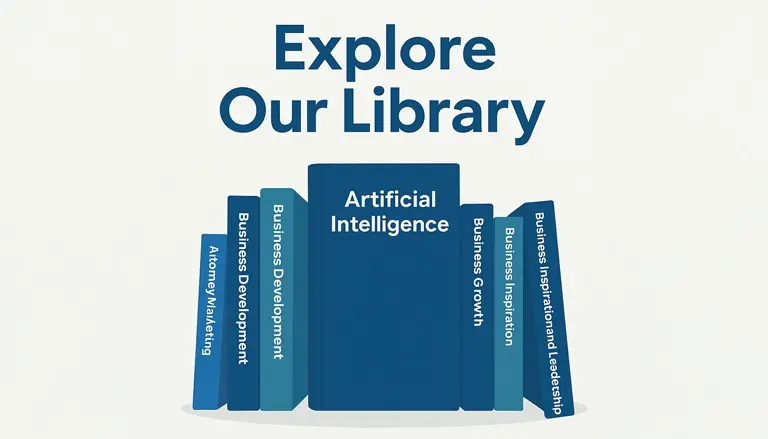

Your Guide to Compliant B2B Data Practices in 2025
Posted April 25, 2025 by Kevin Chern
“Data is a precious thing and will last longer than the systems themselves.”
— Tim Berners-Lee
Last October, I sat across the table from a business owner who had just received a cease-and-desist letter from a state attorney general. His offense? He was using a third-party list for B2B email outreach something his competitors were doing, something he’d been told was “standard.”
The catch? That list included data scraped without consent. Learn more about data scraping risks for B2B marketers.
The real kicker? His company had done nothing with malicious intent. They weren’t selling consumer emails or exposing medical records. They were targeting CFOs at mid-market companies with a whitepaper. But that didn’t matter. Because under the new data privacy frameworks rolling out globally—intent doesn’t matter nearly as much as compliance.
Welcome to 2025, where data laws are expanding, enforcement is accelerating, and B2B marketers are finding themselves squarely in regulators’ crosshairs.
If you’re a business owner who believes privacy laws don’t apply to you because “you don’t sell to consumers,” you need to read this carefully.
Let’s walk through what’s changed, what’s required, and what practical, compliant B2B data handling looks like today.
Why B2B Data Isn’t Exempt Anymore
Let’s start with the old myth: “B2B data doesn’t fall under privacy laws.”
That used to be true. Kind of. But it’s not anymore.
Several major data privacy regulations now explicitly apply to business contact data, especially when that data can be tied to an individual.
Consider these:
- GDPR (EU): Applies to any data that can identify a person including their business email.
- CCPA/CPRA (California): Expanded definitions of “personal information” to include employment-related data.
- Virginia CDPA, Colorado CPA, Connecticut CTDPA, Utah UCPA: All have nuances that pull in B2B data when used for profiling or targeted advertising.
- Canada’s Bill C-27 (expected 2025): Includes B2B data under the scope of “personally identifiable information.”
- India’s DPDP Act: Covers business emails and IP addresses.
Bottom line: if your marketing stack touches personal work data names, titles, emails, behavioral tracking you’re in scope.
What Are the Risks of Noncompliance?
Let’s talk stakes.
- GDPR fines can reach €20 million or 4% of global revenue, whichever is higher. (Source: EU GDPR Portal)
- CPRA allows individual lawsuits and class actions, with statutory damages of $100–$750 per violation. (Source: California AG)
- Data brokers in Vermont and California must register and comply or face steep penalties.
- Privacy rights nonprofits are aggressively targeting B2B lead vendors.
One study from KPMG found that 75% of consumers won’t buy from a brand they don’t trust with their data and B2B buyers increasingly behave like B2C ones.
If you’re collecting data without consent, tracking behavior without notice, or sending outreach without proper legal basis, you’re not just risking a fine. You’re risking your reputation.
How the Rules Have Changed Since 2020
A few years ago, a privacy policy on your website and an “unsubscribe” link in your emails checked most boxes. Today? Not even close.
Here’s what’s changed since 2020 that business owners need to know:
1. Opt-Out ≠ Compliant Anymore
Many laws now require opt-in, not opt-out, for data collection especially for tracking via cookies or retargeting.
2. Consent Must Be Granular and Documented
You need to prove who consented to what, when, and how and provide them a way to revoke it easily.
3. Data Brokers Are Under Watch
If you’re buying lists from providers, you better know how they sourced the data. “Publicly available” isn’t enough anymore.
4. The “Legitimate Interest” Loophole Is Narrowing
Under GDPR, legitimate interest can be used as a basis for B2B outreach but it must be balanced, disclosed, and easy to opt out of.
What Does a Compliant B2B Data Workflow Look Like in 2025?
Let’s break it down practically, step by step from collection to processing to outreach.
Step 1: Lawful Collection
Sources of your data must be consented, declared, or self-submitted. That includes:
- LinkedIn opt-in forms
- Website signups with explicit checkboxes
- Conferences where attendees agreed to share info
- Vendor lists with proper disclosure at point of capture
Avoid:
- Scraped lists
- Purchased emails from unknown brokers
- Auto-enriching tools that add personal emails without disclosure
Step 2: Purpose Limitation
You must clearly state why you’re collecting the data and only use it for that purpose.
Good: “We’re using your email to send marketing content and product updates.”
Bad: “We just added you to everything because you filled out one form.”
Every purpose needs a separate opt-in checkbox.
Step 3: Documentation & Audit Trail
You should be able to prove:
- Where each contact came from
- When and how they consented
- The legal basis for each type of outreach
Tools like OneTrust, Osano, or even your CRM with audit trails can help here. . Learn how smart businesses approach systems and vendors by exploring the smarter path to scale through compliant outsourcing.
Step 4: Outreach That Honors Preferences
Segment your outreach by:
- Consent status
- Geography (privacy laws vary by region)
- Purpose (e.g., transactional vs marketing)
Use double opt-in where possible. And don’t bury your unsubscribe link—make it visible.
Step 5: Data Subject Rights
This one gets overlooked often.
Under most global privacy laws, data subjects (yes, including B2B contacts) can:
- Request access to their data
- Request deletion
- Ask to be removed from processing
- File complaints
You need a system to respond to those requests within 30 days, often less.
Real Case Study: B2B SaaS Company Hit With Privacy Complaint
A Series B SaaS firm we advised had purchased a list of 8,000 CFO contacts to promote a whitepaper. Within two weeks of launch, they received a complaint via the UK’s ICO (Information Commissioner’s Office).
The issue?
- Contacts had not opted in
- There was no disclosure at data collection
- Their website didn’t have a compliant cookie banner
- They had no process for honoring opt-out requests
Resolution required:
- Full suppression of the campaign
- $35,000 in legal and audit costs
- Months of lost outbound momentum
We helped them rebuild a compliant lead-gen program using LinkedIn forms, gated content with opt-in, and consent-based nurturing and within 6 months, their cost per qualified lead dropped by 40%. Why? Trust-based outreach converts better.
How to Vet Third-Party Vendors in 2025
Many businesses rely on data partners, list providers, enrichment tools, and lead generation agencies. That’s fine if they’re compliant.
Here’s what to ask:
- Can you show proof of consent or lawful basis for each contact?
- Do you store consent records and data subject rights logs?
- Are you registered as a data broker (if applicable in your state)?
- Do you honor regional privacy preferences and suppression?
- Can you integrate with our systems to manage deletions and updates?
Avoid vendors that say: “It’s B2B, so it doesn’t matter.”
Best Practices for B2B Data Compliance
Let’s bulletproof your strategy with tactical tips.
- Use Clear Opt-In Language
Say what data you collect, why, and what they’ll get. No pre-checked boxes. - Geo-Segment Your Outreach
Map campaigns by privacy regions California, EU, Canada, etc. - Create a Consent Database
Track when, where, and how each contact opted in. Build workflows around it. - Deploy a Cookie Management Platform
Compliant banners + preference centers. Bonus: consumers will trust you more. - Train Your Sales & Marketing Teams
They must know what’s allowed and what’s not. Document your rules. - Have a DSAR (Data Subject Access Request) Playbook
Build templates and timelines for deletion and access requests.
What’s Coming Next? Trends in B2B Data Privacy
Stay ahead of the curve by watching these emerging trends:
- Global Privacy Standardization: We’re inching toward a GDPR-lite framework in the U.S., likely by 2026.
- Platform Enforcement: LinkedIn, Meta, and Google are adding strict consent requirements. Non-compliance = bans.
- AI and Data Minimization: Using AI to enrich or analyze contact data? You’ll need to justify it under purpose limitation and profiling laws.
- Trust as a Differentiator: B2B buyers are increasingly influenced by data ethics. Transparency will be a competitive edge.
Think of Compliance as a Brand Advantage
Most business owners treat compliance like a box to check.
But the best treat it like brand equity.
Privacy isn’t a burden it’s a buying signal. Buyers today are asking:
- Can I trust you with my information?
- Will you use it respectfully?
- Are you protecting your customers like you’d protect your own?
When you get this right, you don’t just avoid fines. You build trust. And trust drives the pipeline. See how others build trust with compliant marketing.
Are your B2B data practices earning trust or inviting trouble?
If you had to show your outreach systems to a regulator tomorrow, would you feel confident or start sweating?
Let’s make compliance not just something you have to do… but something that works in your favour.

Kevin Chern – CEO – Sanguine Strategic Advisors
After 30 years of building businesses while navigating some of the most complex paths to success, Kevin Chern founded Sanguine Strategic Advisors to lend his insight and experience to other serial entrepreneurs, small business owners and folks in need of a roll-up-your-sleeves innovator, deal maker and doer.
Tags:




